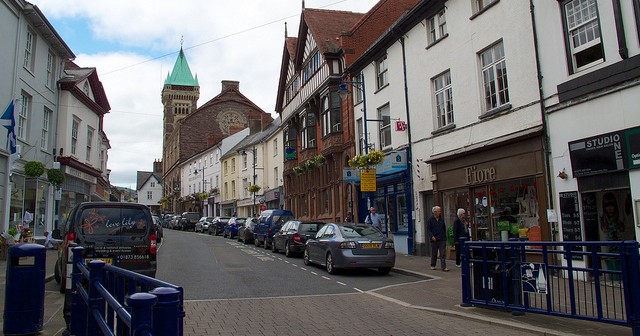Introduction
If the county of Gwent were a castle wall, then the Gateway would be Abergavenny. Which is a thriving market town between The Brecon Beacons and the Black Mountains. The River Usk flows through the town, to join the River Severn and Wye at the Bristol Channel some 20 miles downstream.
History
The name Abergavenny is derived from the Roman name “Gobannium”, which in Latin means place of the smitten. Which was a long glacial mound providing and easily defensible site for the first dwellers over 6000 years ago.
In the year 1090 the Normans conquered the region and in 1190 built a motte and bailey castle on the northern edge of the town which was established by Haudin de Ballum in a very turbulent border area and in 1175 it was the the scene of the massacre of local Welsh Chieftains.
The 15th Century for Abergavenny was another turbulent period, when Wales was ravaged by the effects of Owain Glyndwrs attempt to establish a Welsh State. The town was attacked in 1404 and St Mary”s Priory was burnt down.
At the Battle of Compstone Hill near Grosmont between Owain Glyndwrs forces and those of Henry of Monmouth (later Henry V) there was 8000 casualties. Abergavenny also played a part in the Wars of the Roses with Gellian Herbert (Earl of Pembroke and Lord Raglan supporting the Yorkist cause).
In the 19th century the town became a bursting cultural centre and it is important to Welsh History and Culture from 1833 to 1854 the Abergavenny Cymraegyddion brought together scholars and poets from all over Europe and beyond. As well as giving support to local literary personal and the ailing woollen industry. The Coming of the Railways in the mid 1850”s assured the expansion of the town and until fairly recently the railways were a major employer.
Despite all the occurrence of the past, Abergavenny is still a beautiful, vibrant busy place under the shadow of the Sugar Loaf mountain and with the vigorous river going through the Vale of Usk. It has one of the largest Parish Churches in Wales (St. Mary”s Priory) which is not only an active parish, but is the resting place of many local dignitaries and citizens.
For the visitor, there is plenty to see and do from walking, reading, eating, and accommodation. Also in October there is a Festival of Food in the town which attracts thousands of people from far and wide. Abergavenny is one of the Gems of Gwent and Wales which only by visiting will bring real pleasure.
Useful Links
Discover more from LandmarkLocation.com
Subscribe to get the latest posts sent to your email.


